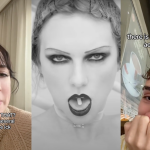
For the first time in history, scientists have recorded back-to-back severe coral bleaching across huge tracts of the Great Barrier Reef.
Aerial surveys completed by the ARC Centre of Excellence for Coral Reef Studies show that bleaching was most severe in the middle third of the reef, while last year it was the top third.

“The combined impact of this back-to-back bleaching stretches for 1,500 km (900 miles), leaving only the southern third unscathed,” says Prof. Terry Hughes, director of the centre, who undertook the aerial surveys in both 2016 and 2017.
“The bleaching is caused by record-breaking temperatures driven by global warming. This year, 2017, we are seeing mass bleaching, even without the assistance of El Niño conditions.”

Dr. James Kerry, who also undertook the aerial surveys in 2016 and 2017, says the back-to-back bleaching has basically given the coral affected last year a “zero prospect of recovery”.
“Bleached corals are not necessarily dead corals, but in the severe central region we anticipate high levels of coral loss,” he said.
“It takes at least a decade for a full recovery of even the fastest growing corals, so mass bleaching events 12 months apart offers zero prospect of recovery for reefs that were damaged in 2016.”

“Clearly the reef is struggling with multiple impacts”, said Prof. Hughes. “Without a doubt the most pressing of these is global warming. As temperatures continue to rise the corals will experience more and more of these events: 1°C of warming so far has already caused four events in the past 19 years.
“Ultimately, we need to cut carbon emissions, and the window to do so is rapidly closing.”
Photo: Ed Roberts / Supplied.



